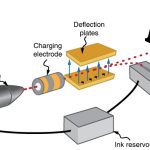I cannot say of human beings, but for electricity to flow there needs to be differences of potential between two points, and it is this difference of potential that is known as the potential difference – simple, isn’t it?
Well if you are bit confused by my comparisons just remember that the phenomenon that take place in the intangible realms of matter need to be explained to the mind’s eye through such comparisons only. Nobody can see current with the naked eye (just ping me if you can see it) flowing through a wire hence such analogies are necessary to explain such unviewable events.
A Simple Voltaic Cell
We will not talk about huge electricity generation plants in these initial stages but only about a humble yet equally powerful source of electrical energy namely the voltaic cell. Just imagine two plates made out of copper and zinc and immersed in sulphuric acid. I will go into the details of the chemical reaction that takes place but just remember that electrons get removed from the copper plate and get deposited on the zinc plate during the process thus leaving them positively and negatively charged respectively. The positively charged plate or electrode is known as anode while the other is known as cathode.
You might think that the electrons tend to go to the anode which is absolutely right; but cannot do so through the cell electrolyte. Electrons can only travel if there is an external wire connecting the two plates or electrodes thus completing a closed circuit. As the electrons go towards the anode, the cathode gets depleted but is amply compensated by the ongoing chemical reaction within the cell.
The Units of P.D.
The unit of potential difference is known as volt (doesn’t the word seem very familiar) and yes these are the same volts which you refer every time you purchase some electronic equipment. However in the strict technical sense of the word, a volt is the electrical force required to make a current of one ampere flow through a conductor of one ohm resistance and is symbolized by the letter V (as in victory of electricity over darkness).
The potential difference that we discussed above is not of much practical use except that it makes the current flow. This electricity is then harnessed in different ways to move different types of equipment, machinery etc for the requisite purpose. The same electricity which runs a toy train is also powerful enough to run a full sized train and it is surprising to note that how powerful the tiny atomic particles can be. On the bigger scale electricity is produced in power plants and power houses.
One interesting fact is that though the current involves flow of charged particles there are two directions for which it is defined. The flow of current is taken to be opposite to the direction in which electrons are flowing, hence a reader should always keep this in mind to avoid ambiguity and confusion.


